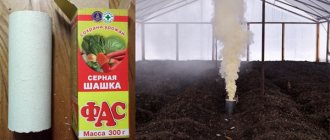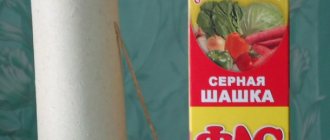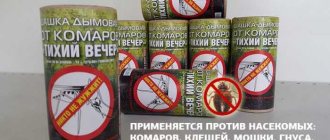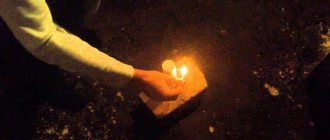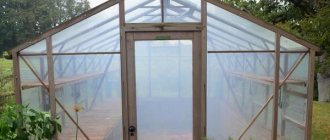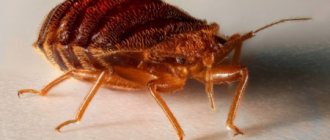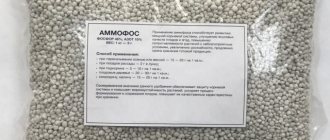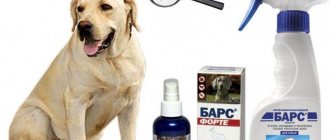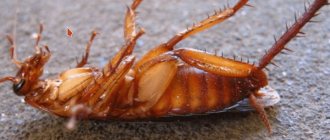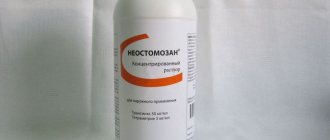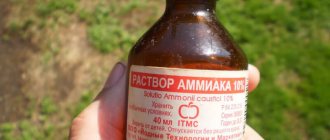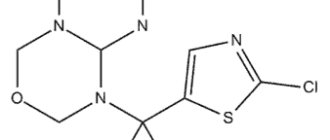Plants in closed ground are susceptible to many diseases and pest attacks. Annual disinfection of the greenhouse using a sulfur bomb will help to avoid this. This method of disinfection allows you to get rid of diseases and insects in one or two procedures.
The technology for fumigating greenhouses with smoke bombs is quite simple, but for it to be effective and safe, the instructions must be strictly followed.
Sulfur block for polycarbonate greenhouse
The principle of operation of a sulfur bomb
A sulfur block is a set of tablets containing the active substance – sulfur – in an amount of 750 g/kg. When smoldering, the checker releases sulfur dioxide, which effectively kills bacteria, viruses and fungi, as well as harmful insects. The checker has a depressing effect on rodents and scares them away.
The checker consists of 5-10 tablets and is designed to treat a certain volume of the room. For processing, take the required number of tablets, set them on fire with a wick and leave the checker to smolder in a tightly closed greenhouse. This produces a large volume of smoke that fills the structure.
Sulfur checker
Smoke easily penetrates into hard-to-reach places: joints of frame elements, polycarbonate, cracks in the foundation and fences of beds - where pests and pathogens accumulate. When combined with vapors and drops of moisture, the anhydride forms sulfurous acid, which gives an additional disinfecting effect and disinfects the soil and walls of the greenhouse.
A special wick comes complete with smoke bombs
When to treat a greenhouse with a sulfur bomb
Disinfection of the greenhouse using a checker is carried out in the fall, after the end of the growing season and complete cleaning of the greenhouse, and also in the spring, no later than two weeks before planting the first crops. Fall treatment is usually carried out in September or early October. In spring, you can begin disinfection in April.
Treatment of a greenhouse with a sulfur bomb
The temperature during fumigation must be at least +10°C. If the greenhouse is located in an area with high groundwater, treatment must be postponed until the soil dries to a depth of at least 10 cm. Otherwise, sulfurous acid will penetrate into the deep layers of the soil, which will adversely affect the activity of soil bacteria.
Reviews
Lyudmila Makarova, Rostov-on-Don
“I started using the Hephaestus checker on the advice of a seller from a garden store. To be honest, at first I doubted its effectiveness. I kept thinking that after the smoke, the bugs and mold in the basement would survive. But no! They died! True, for this I did not just one treatment, but three, apparently everything was neglected, but I am more than satisfied with the result. Now I recommend it to my friends. I forgot about the mold, and in the fall I’ll try to fumigate the greenhouse.”
Irina V., Moscow region
“I tried a sulfur bomb in the barn to drive away the rodents. Don't repeat my mistakes! I didn't read the instructions well, and I paid for it. I cleaned the house at random, and in the middle of the process I suddenly began to remember if I had forgotten anything flammable near the checker. Well, she opened the door. The smoke hit my face, and for about thirty seconds I thought I had gone blind and was about to lose consciousness - the pain in my chest was so strong after inhaling the poisonous gas. Somehow I groped my way to the water, washed my face, and seemed to feel better. But my eyes watered for another week. The same amount of soreness in my throat. But the rats escaped. In general, it's my own fault. In the event of an invasion, I will smoke again, only this time correctly.”
Mikhail Petrovich, Pskov
“In the spring, I decided to preventively treat the cellar against parasites, and bought not the usual “Climate”, but a saber of the “FAS” brand. The product is no worse, but the appearance let us down. I had to explain to the traffic cops for a long time that this was not an army grenade, but a fungicide. So take it into account. The result of the treatment was pleasing, the benefits were very noticeable: the mold stopped spreading after the spring flood, the woodlice died, and woodworms were not visible (the dust stopped falling on the head from the boards). I recommend it, it’s a good product.”
- Author: Maria Sukhorukikh
Rate this article:
- 5
- 4
- 3
- 2
- 1
(0 votes, average: 0 out of 5)
Share with your friends!
The benefits and harms of sulfur bombs
Before you start treating a greenhouse with a sulfur bomb, it is necessary to evaluate its benefits and harm to the structure itself, the soil and the plants.
Advantages of sulfur bomb:
- effective against fungus and mold, bacteria and harmful insects;
- has high penetrating ability;
- economical;
- easy to use.
But there are also disadvantages that should also be kept in mind.
- The toxicity of sulfur bombs is extremely high, so its use requires compliance with safety rules.
Sulfur smoke bombs are very toxic
- Sulfur dioxide has a destructive effect on unprotected metal frame parts.
- After repeated treatments, polycarbonate becomes cloudy and becomes covered with microcracks.
- The acid formed as a result of the reaction of smoke with water kills not only harmful, but also beneficial microorganisms, worsening soil fertility.
- The effect of the sulfur bomb does not extend to deep layers of soil.
- Treatment cannot be carried out during the growing season and less than two weeks before planting.
Important! When using a sulfur bomb, you must strictly follow safety precautions: the bomb is a fire hazard, and its smoke is poisonous!
When treating a greenhouse with a sulfur bomb, it is important to follow safety precautions
Considering all the disadvantages and difficulties in using sulfur bombs, before using it it is necessary to evaluate the feasibility of processing. Experienced gardeners advise using a sulfur bomb in the following cases.
- Plants of the same species were grown in a greenhouse for several years in a row, having common pests and diseases.
- During the season, outbreaks of fungal and bacterial diseases with a large area of damage were observed in the greenhouse or in its immediate vicinity.
- Insect pests were noticed on the plants, and the fight against them using folk remedies or systemic insecticides turned out to be ineffective.
- The plants in the greenhouse are infected with spider mites - they are difficult to remove using conventional means.
In other cases, it is better to carry out preventive disinfection of greenhouses using biological products - they do not have a harmful effect on the soil and the structure of the greenhouse. You can also use other types of checkers with fungicidal and insecticidal effects.
Prices for sulfur bombs
sulfur bombs
Advantages and disadvantages
When using sulfur bombs in greenhouses, you can immediately note the obvious advantages of the product. Just keep in mind that in addition to convenience and efficiency, you will also encounter negative aspects associated with this method of disinsection of a greenhouse.
| pros | minuses |
| Disinfection of various premises: greenhouses, basements, warehouses | Possibility of poisoning by a caustic substance if safety precautions are not followed correctly |
| Versatility of use: the sulfur bomb destroys all pathogenic microorganisms and insect pests at once. There is no need to use additional products (insecticides, fungicides) | Toxic smoke has a bad effect on the metal and wooden frame of the greenhouse. Before use, it is necessary to apply a layer of primer, paint or treat the metal with grease. |
| Scale of impact: smoke penetrates into all hard-to-reach places | The substance does not penetrate into the deep layers of the soil and does not affect pathogens located there |
| Ease of use: “smoke flasks” are sold ready-made. You just need to follow the instructions correctly | The top layer of soil may be damaged by the combustion products of the bomb. Additional fertilizer will be required |
| Availability of purchase | Negative effects on greenhouse polycarbonate. It may become cloudy and crack after repeated use. |
| Low price. Checkers, as a rule, are cheaper than even the most common drugs. |
Types of smoke bombs
Which sulfur bomb should I choose for processing a polycarbonate greenhouse? This question worries many novice summer residents. Often, sulfur bombs are mistakenly classified as means for killing insects and microorganisms based on other toxic substances. The scope of application of the smoke bomb and its effectiveness depend on the active substance.
Table 1. Types of smoke bombs.
| Type of smoke bomb | Description |
| Checkers FAS, Climate, Pawn | Sulfur-based checkers are used to get rid of fungal and bacterial infections, mold, and rot. They are also effective against insect pests: spider mites, aphids, thrips, whiteflies, leaf-eating caterpillars, slugs. It inhibits plants; treatment is carried out only in an empty greenhouse after complete harvesting of the crop and plants. |
| Checkers G-17, G-20 | Smoke bombs based on hexachlorane, a systemic insecticide with contact-intestinal action. Effective against aphids, caterpillars, thrips and whiteflies. They have no noticeable effect on herbivorous mites. They are also useless against diseases. Use during the growing season is not allowed. |
| Checker Whist | Checkers with didecyl-dimethyl-ammonium bromide have a pronounced fungicidal and bactericidal effect, and also kill insect pests. Checkers with bromide effectively fight wet rot and fungal infections. It is allowed to use the checker in the first weeks of the plant growing season, even before the start of fruiting. |
| Checkers City, Quiet Evening, Tsifum | Checkers based on permethrin have a wide range of effects on insect pests. Effective against all types of aphids, caterpillars, mites, thrips, whiteflies, as well as their larvae. Checkers with permethrin are fireproof, their surface does not heat up when fumigated. They do not inhibit plants and can be used during the growing season before fruiting begins. |
| Checkers Vulcan, Hephaestus | Tobacco sticks, the active ingredient is nicotine. Used in greenhouses during any growing season and after harvesting to combat harmful insects: aphids, whiteflies, spider mites, thrips, most butterflies and caterpillars. Smoke has practically no effect on the larvae, so twice treatment is required with an interval of 10-15 days. Tobacco sticks are useless against rot and infections. |
A type of insect checker
As can be seen from the table, sulfur bombs have the widest spectrum of action, so they are most often chosen for complete disinfection of greenhouses after the end of the season. In order not to harm the soil, greenhouse frame and polycarbonate, it is necessary to follow the processing technology.
Review of manufacturers
There are several types of smoke bombs available in specialized stores. The most popular among them are:
- “Pawn-S”, “Pawn-B” - have proven themselves well in polycarbonate greenhouses. The sulfur in them is not compressed, but poured. It operates on the principle of a pesticide aerosol, filling greenhouses not with smoke, but with microparticles of sulfur. With this method, the amount of sulfuric acid is much lower than the limit. It is advisable to have forced ventilation in the room being treated, and then leave it closed for at least 12 hours to allow the aerosol to settle. Price from 400 rub.
- "Climate" - represented by large tablets, collected 5-10 pieces in cylinders, and a wick. Both one tablet and the entire pyramid are set on fire. Disinfects greenhouses in 36 hours. The basement should be disinfected at least 5 days before planting the crop. The price of a package (10 tablets) is within 70 rubles.
- "FAS" - one of the most affordable sulfur bombs. It looks like a smoke grenade, and is also enclosed in a polycarbonate casing. Can be produced in the form of a triangle or a cylinder. Comes with a wick. It is extremely toxic and requires long-term ventilation at the end of the treatment process. It is prohibited to light in sheds where livestock will presumably be kept. Price from 90 rub.
In addition to smoke sulfur bombs, tobacco and permethrin bombs are also produced. They have a third hazard class. These devices are approved for use in the presence of animals, in general premises, are not toxic to living plants and are harmful to parasitic insects. Among them it is necessary to note:
- "Volcano" - consists of tobacco dust, but it is still not recommended to be nearby. Costs from 200 rubles;
- "Hephaestus" - has a tobacco component, so it can be used next to living plants (on average 250 rubles);
- "Whist" - fights various fungi and lasts for more than six months. Available at a price (from 50 rubles).
In general, treating a room using a sulfur bomb is not difficult. The main thing is to take precautions, strictly follow the instructions and do not smoke in the presence of animals and people. And regular use of the product will save you from mold in the corners of the basement and pests in greenhouses.
Greenhouse processing technology
The process of fumigating a greenhouse with a sulfur bomb does not take much time - the bomb burns for several hours. However, the effect of sulfur dioxide continues for two to three days. To increase the effectiveness of the product, it is recommended to choose the correct dosage and follow the step-by-step processing instructions.
Calculation of sulfur bomb dosage
The checker consists of several tablets, which allows you to most accurately select the dose of the active substance. The calculation is based on the volume of the greenhouse, the consumption of the active substance is indicated on the packaging.
Action of sulfur bomb
Below is an example calculation.
- For processing the greenhouse, a “Climate” checker weighing 300 grams, 10 tablets was selected. The size of the greenhouse is 3x6x2.2 meters.
- Calculating the volume of a greenhouse is quite simple: you need to multiply its geometric dimensions in meters, the result is the volume in cubic meters. For the given dimensions of the greenhouse it will be 3·6·2.2=39.6 m3.
- According to the manufacturer’s recommendations, one block weighing 300 g is enough to process 20 m3 of a greenhouse.
- To process the greenhouse you will need 39.6:20=1.98, that is, 2 checkers of 300 g or 20 tablets.
The estimated number of checkers is distributed into several groups so that fumigation is carried out evenly. It should be noted that the wick smoldering time is 90 seconds, after which poisonous gas is released. The number of checkers must be calculated so that you have time to set them on fire and leave the greenhouse in a minute and a half.
Important! If the greenhouse volume is large and several bombs are used at the same time, it is recommended to use a gas mask and a protective suit to avoid poisoning.
How to use a sulfur bomb in a greenhouse
Not only the effectiveness of processing, but also your safety depends on the correct use of the checker. Therefore, it is recommended to strictly follow the instructions given in Table 2.
Instructions for use of FAS sulfur smoke bomb
Table 2. Step-by-step instructions for using sulfur bombs in a greenhouse.
| Steps, illustrations | Description of actions |
| Cleaning of cultivated plants and weeds | Treatment of the greenhouse with a sulfur bomb is carried out only after complete removal of vegetation from the greenhouse. Cultivated plants are removed, tops and residues are burned. It is not recommended to use them for compost. Weeds are pulled out, paying special attention to plants with powerful taproots. Pest larvae often hide in their root rosettes for the winter. If signs of disease or pests are detected, the weeds are burned or taken outside the garden. Healthy plants can be placed in a compost heap. |
| General cleaning in the greenhouse | The walls of the greenhouse are washed with warm water and liquid detergent. For washing I use a soft sponge or rag; the use of brushes and scrapers for polycarbonate is not recommended - you can damage its surface, after which it becomes cloudy. When washing, pay special attention to the joints of the polycarbonate and the frame. Dust and dirt usually accumulate there, where bacteria, fungal spores and mites overwinter. They can be further cleaned with a soft brush. Finally, the walls of the greenhouse are washed with water from a hose. |
| Tillage | Smoke from a sulfur bomb can penetrate only into loose soil to a depth of no more than 5 cm. Most pests lay their larvae at greater depths for the winter. Therefore, to increase the efficiency of processing, it is recommended to dig up the soil in the greenhouse and loosen it. In this case, the larvae and pests will appear on the surface and will be destroyed. The top layer of soil can be removed and taken outside the greenhouse. |
| Greenhouse sealing | Using a sulfur bomb is only possible in a sealed room, otherwise the smoke will escape and the bomb will be ineffective. In addition, the smoke is poisonous, and if it comes out you can get poisoned. The greenhouse is sealed by sealing cracks and joints with sealant, tape or putty. To enter the greenhouse, one of the doors is left, and it can be sealed using a rubber window seal, and after igniting the checkers, it can be additionally sealed with tape. |
| Protection of metal structures | When exposed to sulfur dioxide on unprotected metal, a corrosion center is formed. Therefore, checker manufacturers recommend coating unpainted metal parts with grease or other thick organic-based lubricant before starting processing. If paint chips are observed on the frame of the greenhouse, it is recommended to first restore the coating and dry it. Particular attention should be paid to parts that experience mechanical stress: door hinges, door frames and vents - these are where the paint comes off most often. |
| Ensuring personal safety | The smoke from the bomb is poisonous and can cause irritation if it comes into contact with wet skin. Therefore, before starting processing, it is necessary to put on protective clothing - a special suit or overalls made of thick fabric with long sleeves. Gloves are put on your hands and your head is protected with a hood or scarf. The respiratory organs are protected with a respirator. If possible, use a gas mask. |
| Wetting surfaces | To increase efficiency, immediately before treatment, moisten the walls of the greenhouse and the top layer of soil with a hose or sprayer. High humidity promotes the conversion of sulfur dioxide into sulfurous acid, which is an antiseptic and preservative. When in contact with moisture, ash or some mineral fertilizers, sulfurous acid turns into sulfuric acid, the effect of which on the soil is extremely negative, so you cannot fertilize the soil in the greenhouse before treating it with a saber! |
| Preparing the base for the checker | The sulfur bomb heats up when smoldering; to use it, it is necessary to prepare a non-combustible base. This could be paving slabs, a sheet of metal, an enamel basin or bucket. If there are concrete or tiled paths in the greenhouse, you can place the saber directly on them, provided that there are no flammable objects nearby. |
| Lighting a checker | The checker is placed strictly vertically on the base, and the wick that comes with the checker is inserted under the top tablet. In its absence, the saber is ignited using a newspaper. After making sure that the wick is burning steadily, you need to quickly leave the greenhouse and close the door behind you. If there are cracks in the door, they are immediately sealed with tape or sealed in some other way. |
| Fumigation and disinfection of the greenhouse | The emission of smoke continues for several hours. It completely fills the greenhouse, settles on the walls, soil and in hard-to-reach places. The effect of anhydride on bacteria and pests continues for 24-72 hours, so it is better not to open the greenhouse for the next three days. |
| Ventilation and subsequent cleaning | After holding for three days in the greenhouse, open the doors and vents and ventilate it until the specific odor completely disappears. To avoid clouding of the polycarbonate and corrosion of the frame, it is recommended to rinse the greenhouse with a small amount of clean water. |
| Subsequent soil treatment with EM preparations | Sulfur has a negative effect on soil microorganisms and kills beneficial fungi and bacteria. To restore soil fertility, it is recommended to add a solution of biological products, such as Emochka, Baikal EM1, Siyanie EM2, before the start of the new season. Treatment is carried out in the spring after the upper layers of the soil have been warmed to a temperature of +15°C. The solution temperature should be within 25±5 °C. The soil is watered from a watering can and left for 5-7 days, after which the plants begin to be planted. |
How to set fire to a sulfur bomb in a greenhouse
Disinfection of a polycarbonate greenhouse in the fall
Treatment must begin with the removal of all plant residues, weeds, mulch - various pests can hide and overwinter in them. Tops affected by diseases and pests are burned. Read more here.
How to use a sulfur bomb
- The checker is fireproof. Before using it, it is necessary to remove metal objects and the entire crop from the greenhouse or greenhouse, and cover the remaining metal parts with grease to avoid damage.
- All openings must be insulated: the greenhouse must be airtight.
- Loosen the soil as thoroughly as possible so that the smoke penetrates its structure and thoroughly neutralizes it.
Photo: Thoroughly loosen the soil before disinfection.
- Calculate the optimal amount of fungicides. To do this you need to know the consumption rates. Usually - about 60 g per cubic meter, therefore, a standard block is enough to process five cubic meters. Distribute the products evenly over the soil surface. And due to the strong heating during combustion, it is better to place them on bricks.
- Before lighting, be sure to wear a respirator and safety glasses. If you have long hair, put it in a bun.
Photo: Be sure to wear personal protective equipment before disinfection.
- All that remains is to quickly light the wicks, moving from the farthest checker to the nearest one. Leave the scene as quickly as possible, closing the door behind you as tightly as possible.
The combustion process can last up to one and a half hours, after which the greenhouse or greenhouse must be kept closed for one to three days. Thoroughly ventilate the room for another day. It is possible to carry out work there (including planting seedlings or sowing seeds) only after a week.
| These recommendations apply to the vast majority of types of sulfur bombs, however, for greater confidence, after purchasing a sulfur bomb, please read the instructions to avoid mistakes when using such protective equipment. |
